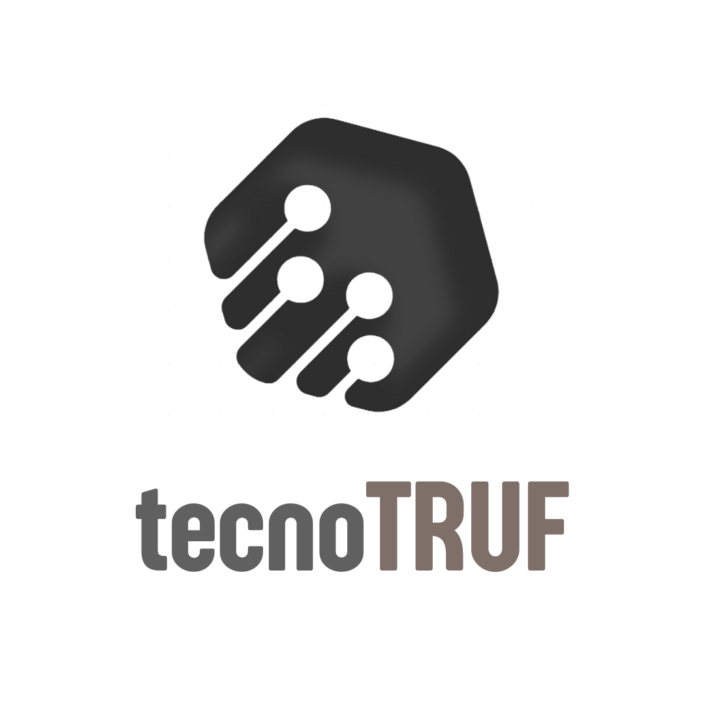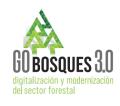
TECNOTRUF Operational Group: New technologies in the management of truffle plantations to improve the economic performance of farms.
- Type Operational group
- Status In progress
- Execution 2024 -2027
- Assigned Budget 599.131,01 €
- Scope Supraautonómico
- Autonomous community Aragón; Madrid, Comunidad de
- Main source of financing CAP 2023-2027
TECNOTRUF aims to design an innovative production and marketing model for products and services related to black truffles that improves their production and quality, optimising the use of water resources and the profitability of the crop, while also having an impact on mitigating the effects of climate change and producing an environmentally sustainable balance.
The latest technology will be made available to the sector in order to meet the needs identified in the production of black truffles in plantations with different ecological conditions, which will provide them with an objective modernization, generating great socioeconomic wealth, capable of developing an economic sector that has an impact on the rural environment.
Expanding scientific knowledge will allow truffle growers to manage their crops more efficiently by carrying out work at the right time, thereby saving resources, leading to greater economic and environmental sustainability of the crop. It will also improve their decision-making capacity based on management needs and expected production results, optimising investment costs and staff recruitment.
The project aims to design an innovative global production and marketing model for products and services related to the black truffle, a hypogeous mycorrhizal fungus that grows in symbiosis with a host tree. In this regard, TECNOTRUF will provide the sector with the latest scientifically based technology to meet the identified needs in black truffle production from truffle plantations, which will be the project's priority area. Likewise, the project seeks to innovate in the marketing channels for truffle-derived products and to provide comprehensive technical expertise.
Definition of study variables; Characterization of plantations. Ecofis pilot station design; Implementation of the three stations. Camera-drone requirements; Camera-drone integration. Variable monitoring system; Production monitoring system; Multispectral flight; Geospatial data; Cloud database. Determination of optimal physiological state; Definition of cultivation practices; Execution of cultivation practices; Program evaluation. Quantification of truffle by-products; Alternatives for the valorization of by-products; Production protocol for alternative products. Organic quality seal; Sustainable forest management seal. Traceability system; CRM module.
The project aims to design an innovative global production and marketing model for products and services related to the black truffle, a hypogeous mycorrhizal fungus that grows in symbiosis with a host tree. TECNOTRUF will provide the sector with the latest scientifically based technology to meet the identified needs in black truffle production in plantations under diverse ecological conditions. It also seeks to innovate in the marketing channels for truffle-derived products. TECNOTRUF will focus on the management of truffle plantations, which will be the project's priority area. These plantations are formed by the union and collaboration of a host tree (90% of the plantations use Quercus ilex as the tree species) and the development of a fungus (Tuber melanosporum) and are generators of great socio-economic wealth, capable of developing an economic sector that has a special impact on the rural environment and specifically on the most depopulated areas of our country.
Therefore, the project is linked, as a secondary thematic area, to innovation in alternative marketing channels for this product and all associated services. Furthermore, the project incorporates innovative elements into three AEI-AGRI objectives. Firstly, it aims to promote economic and environmental efficiency in the truffle cultivation sector, a sector straddling agriculture and forestry, to optimize processes throughout the system and thus make it economically viable, productive, and competitive, as well as socially and environmentally responsible. Secondly, it seeks to enhance existing knowledge and professionalize the sector, given the scarcity of available technical and comprehensive knowledge.
- Development of new technological procedures based on the monitoring of ecological variables to optimize the productivity of truffle plantations, and the improvement of the marketing of their derived products.
- Characterization of truffle plantations with different ecological characteristics.
- Development of new technologies for monitoring ecological variables to track the holm oak-truffle relationship.
- Development of an agronomic management plan to ensure sustainability and optimize the productivity of truffle plantations.
- Preliminary evaluation of three truffle plantations in the provinces of Castellón, Guadalajara and Teruel.
- Development and implementation of 3 ecophysiological stations for monitoring parameters of the holm oak-truffle complex.
- Integration of multispectral cameras into a drone for monitoring the tree canopy.
- Development of a platform for monitoring ecophysiological, mycorrhizal and production variables in truffle plantations.
- Implementation of a pilot project of agronomic management applied in truffle cultivation.
- Establishment of a valorization plan for truffle by-products.
- Implementation of a quality and sustainability seal for truffles.
- Development of an ICT system to guarantee the traceability of truffles.
- Coordinator/Entity Name: CLUSTER ASSOCIATION FOR THE EFFICIENT USE OF WATER-ZINNAE
- Postal address: CEEI Aragón C/María de Luna 11, Nave 6
- Email coordinator/entity: mfernandez@zinnae.org
- Telephone: 649 10 75 06
The cultivation of the black truffle (Tuber melanosporum Vittad.) has expanded significantly in recent decades in various regions with a Mediterranean climate, characterized by a dry summer with high temperatures and little rainfall. This explains the high complexity of truffle cultivation in its natural habitat, primarily because the optimal conditions for the symbiotic development of mycorrhizae are very specific in terms of water availability and nutrient abundance.
Finding an appropriate irrigation regime and cultivation practices that allow for greater efficiency in the use of this resource under these Mediterranean conditions and better conservation of soil nutrients, both for the mycorrhization and growth phases, is one of the main challenges for truffle producers, given the variability and increasing scarcity of rainfall in this area. Implementing irrigation programs based on plant sensing that take into account the potential negative impact of soil and atmospheric drought will be much more accurate than those based solely on estimating soil moisture.
Thus, the continuous monitoring of ecological and physiological variables that allow the tracking of the holm oak-truffle relationship in response to soil and atmospheric drought is a fundamental challenge when establishing the irrigation needs of truffle plantations.
- ASOCIACION CLUSTER PARA EL USO EFICIENTE DEL AGUA-ZINNAE
- ASOCIACION CLUSTER PARA EL USO EFICIENTE DEL AGUA-ZINNAE
- CONSEJO SUPERIOR DE INVESTIGACIONES CIENTIFICAS - ESTACIÓN EXPERIMENTAL DE AULA DEI
- MYTRUFF SL
- LUZ COCINA ROMERO (MICOLAB)
- ARATECK ELECTRONICS, S.L
- QILEX, SOC. COOP.
- ACG SALVAMENTO Y RESCATE, S.L
- GEOSPATIUMLAB, S.L
- CLÚSTER DE ALIMENTACIÓN Y NUTRICIÓN DE ARAGÓN
- CITA, CENTRO DE INVESTIGACIÓN Y TECNOLOGÍA AGROALIMENTARIA DE ARAGÓN






